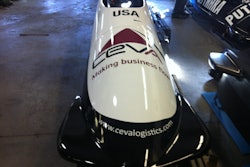Southfield, Mich.—Dec. 18, 2013—AIAG announced that it secured an agreement from multiple automakers to utilize a communal platform to map the automotive supply chain. With support from General Motors, Chrysler Group and Toyota, according to AIAG, it is creating the first web-based industry database for identifying the physical movement of finished goods, parts and materials through the supply chain. The database, planned for launch in early 2014, is to initially map supplier shipments into the United States.
“The first casualty of globalization has been transparency,” said J. Scot Sharland, executive director of AIAG. “For the first time in the history of the auto industry, we have collaboration among key automakers to take the first big step toward creating a centralized supplier data platform for greater visibility into the global supply chain. Led by these three early adopters, we’re launching with a system that puts command and control of the data into the suppliers’ hands and is driven by a federal border security initiative.”
The first generation of the AIAG platform, named Supply Safe–Supplier Security Assessment, maps shipments via the Customs-Trade Partnership Against Terrorism (C-TPAT) certification program. C-TPAT is a federal government program by the U.S. Customs and Border Protection through the U.S. Department of Homeland Security. It allows companies shipping goods and materials into the United States to become certified as a low-risk security threat, which provides the benefit of faster-moving cargo through U.S. customs checkpoints. The frequency of truck and shipping container inspections decreases by a factor of five for C-TPAT-certified companies, and the expedited processing helps the auto industry improve the speed at which parts and material arrive at end destination points.
To better identify suppliers that have C-TPAT credentials, each participating original equipment manufacturer (OEM) asks its tier one suppliers to create a profile in Supply Safe and indicate their C-TPAT certification status. As part of its profile, each supplier enters relevant C-TPAT data, including the geo-location of international sites that produce automotive parts and materials, entry points of shipments into the U.S., and final destinations of those shipments.
Tier one suppliers are asked to solicit data from their suppliers and cascade the data input request down through the supply chain. Each supplier maintains security of its data profile, controlling which companies have the ability to view it.
Currently, nearly a thousand automotive supplier sites are C-TPAT certified and OEMs prefer to use suppliers that are certified to lower their risk of production stoppages caused by delivery performance shortfalls, especially with imported products.









